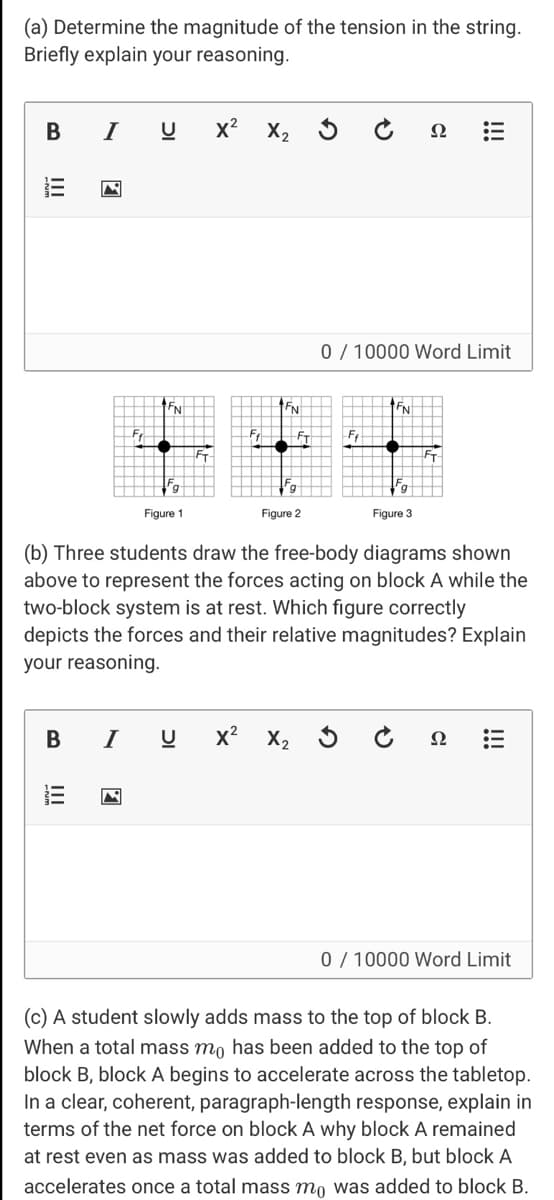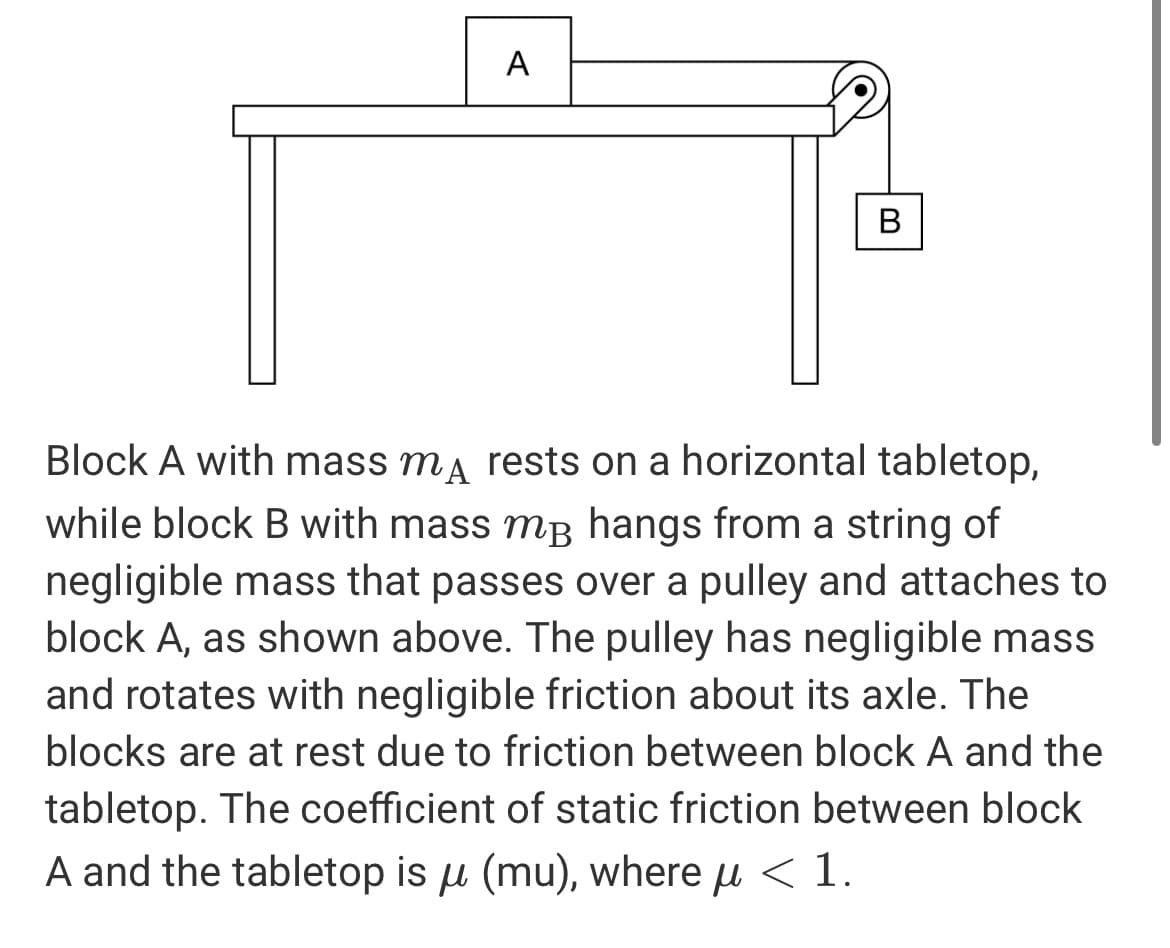A B Block A with mass ma rests on a horizontal tabletop, while block B with mass mB hangs from a string of negligible mass that passes over a pulley and attaches to block A, as shown above. The pulley has negligible mass and rotates with negligible friction about its axle. The blocks are at rest due to friction between block A and the tabletop. The coefficient of static friction between block A and the tabletop is u (mu), where µ < 1.
A B Block A with mass ma rests on a horizontal tabletop, while block B with mass mB hangs from a string of negligible mass that passes over a pulley and attaches to block A, as shown above. The pulley has negligible mass and rotates with negligible friction about its axle. The blocks are at rest due to friction between block A and the tabletop. The coefficient of static friction between block A and the tabletop is u (mu), where µ < 1.
Classical Dynamics of Particles and Systems
5th Edition
ISBN:9780534408961
Author:Stephen T. Thornton, Jerry B. Marion
Publisher:Stephen T. Thornton, Jerry B. Marion
Chapter9: Dynamics Of A System Of Particles
Section: Chapter Questions
Problem 9.44P
Related questions
Question

Transcribed Image Text:(a) Determine the magnitude of the tension in the string.
Briefly explain your reasoning.
В
I
x?
Ω
0 / 10000 Word Limit
N.
F
Figure 1
Figure 2
Figure 3
(b) Three students draw the free-body diagrams shown
above to represent the forces acting on block A while the
two-block system is at rest. Which figure correctly
depicts the forces and their relative magnitudes? Explain
your reasoning.
В
I
x2
X2 5
0 / 10000 Word Limit
(c) A student slowly adds mass to the top of block B.
When a total mass mo has been added to the top of
block B, block A begins to accelerate across the tabletop.
In a clear, coherent, paragraph-length response, explain in
terms of the net force on block A why block A remained
at rest even as mass was added to block B, but block A
accelerates once a total mass m, was added to block B.
!!!
!!!
וכ
II
II

Transcribed Image Text:A
Block A with mass mĄ rests on a horizontal tabletop,
while block B with mass mg hangs from a string of
negligible mass that passes over a pulley and attaches to
block A, as shown above. The pulley has negligible mass
and rotates with negligible friction about its axle. The
blocks are at rest due to friction between block A and the
tabletop. The coefficient of static friction between block
A and the tabletop is u (mu), where u < 1.
Expert Solution
This question has been solved!
Explore an expertly crafted, step-by-step solution for a thorough understanding of key concepts.
This is a popular solution!
Trending now
This is a popular solution!
Step by step
Solved in 2 steps with 2 images

Knowledge Booster
Learn more about
Need a deep-dive on the concept behind this application? Look no further. Learn more about this topic, physics and related others by exploring similar questions and additional content below.Recommended textbooks for you

Classical Dynamics of Particles and Systems
Physics
ISBN:
9780534408961
Author:
Stephen T. Thornton, Jerry B. Marion
Publisher:
Cengage Learning

Principles of Physics: A Calculus-Based Text
Physics
ISBN:
9781133104261
Author:
Raymond A. Serway, John W. Jewett
Publisher:
Cengage Learning

Classical Dynamics of Particles and Systems
Physics
ISBN:
9780534408961
Author:
Stephen T. Thornton, Jerry B. Marion
Publisher:
Cengage Learning

Principles of Physics: A Calculus-Based Text
Physics
ISBN:
9781133104261
Author:
Raymond A. Serway, John W. Jewett
Publisher:
Cengage Learning